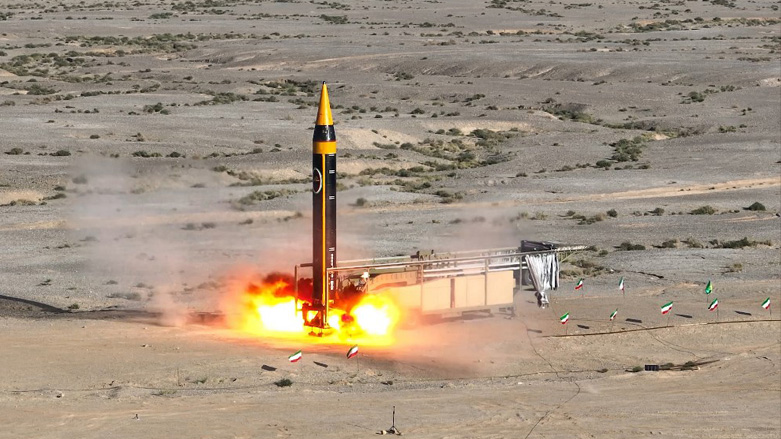U.S. Condemns Iran’s New Long-Range Missile, as Middle East Tensions Build

WASHINGTON DC, United States (Kurdistan 24) – Iran announced on Thursday that it had produced a new ballistic missile with a range of 2,000 kilometers (1,242 miles.)
That distance puts most of the Middle East, although not Europe, within range of the new missile, which is capable of carrying a warhead weighing over one-and-a-half tons.
Iranian authorities paraded the missile, which they have named the Kheibar, before journalists in Tehran. In addition, Iranian state television broadcast a brief video of a missile launch, which it claimed was a launch of the new missile.
The Kheibar is the fourth in a series of Iranian missiles called the Khorramshahr. It is the longest range of any missile produced by Iran so far.
Read More: Iran unveils new ballistic missile
Asked later on Thursday about Iran’s new missile, State Department Spokesperson Matthew Miller criticized it as “a serious threat to regional and international security.”
Miller threatened further U.S. steps against Iran, including additional sanctions. He also appeared to suggest that the U.S. might be increasingly willing to hold Iran accountable for the use by its proxies of weapons that it provides.
“We continue to use a variety of nonproliferation tools, including sanctions,” Miller said, “to counter the further advancement of Iran’s ballistic missile program and its ability to proliferate missiles and related technology to others.”
He noted that U.N. Security Council Resolution 2231, which dates from July 2015, restricts Iran’s missile-related activities. Nonetheless, “Iran continues to seek a range of missile technologies from foreign suppliers and to conduct ballistic missile tests in defiance of the resolution,” he added, without identifying the foreign suppliers involved.
Iran’s unveiling of the Kheibar comes as tensions with Israel are particularly high. On Tuesday, Israel’s Chief of Staff, Lt. Gen. Herzl Halevi, warned in an international conference of possible “action” against Iran, in response to the progress it has made in its nuclear program.
“Iran has advanced with uranium enrichments further than ever before,” he stated, adding, “There are negative developments on the horizon that could bring about [military] action.”
Two senior Israeli officials—Ron Dermer, Minister for Strategic Affairs, and Tzachi Hanegbi, National Security Advisor—are expected to visit Washington next week, after the Memorial Day weekend, the well-regarded news website, Axios, reported on Tuesday.
The visiting Israelis will meet with Jake Sullivan, the U.S. National Security Advisor, as well as other senior officials at the White House and State Department.
Iran’s nuclear program will be high on their agenda. Axios reported that Hanegbi had said that Israel hoped the Iranian nuclear threat could be addressed by non-military means, but he had also affirmed that Israel was preparing “for a situation where a confrontation will be inevitable.”
Iran’s new Kheibar missile is capable of reaching Israel, and should it succeed in developing a nuclear warhead, carrying it in an attack.
Kheibar is the name of an ancient town, with a large Jewish population, that was located in what is now Saudi Arabia. It is known for a 7th century battle in which the early Muslims defeated the town’s many Jewish residents.
